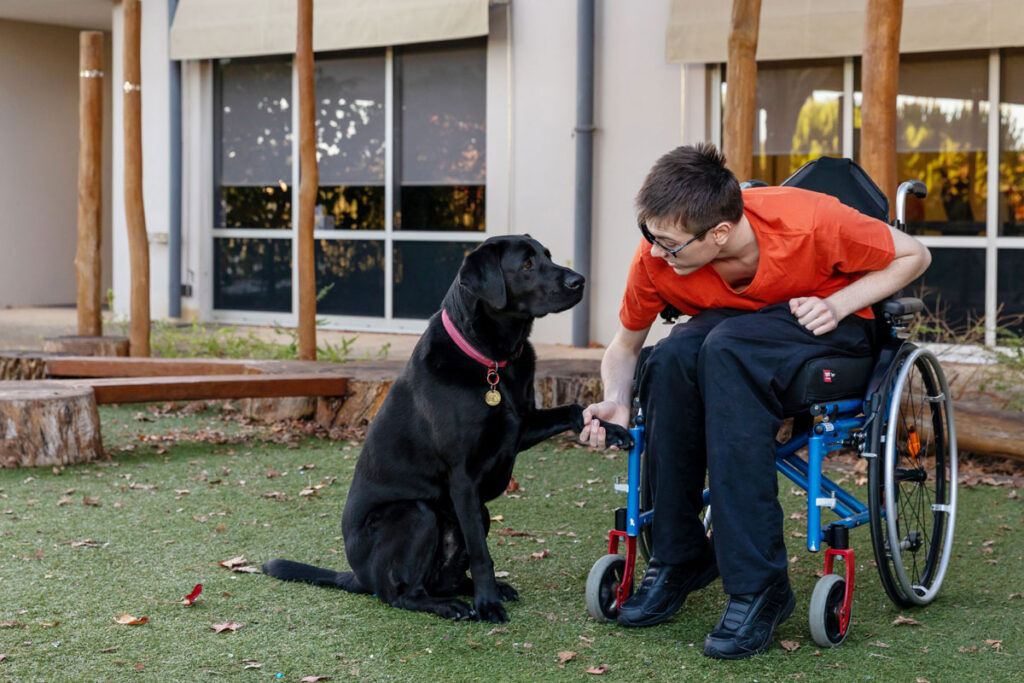Seventeen-year-old Blake has faced a number of challenges in his teenage years.
Blake was diagnosed with autism as a young child and at the age of 13 doctors found a benign brain tumour. He underwent surgery that resulted in an acquired brain injury (link opens in new window).
“The surgery changed him. It affected his vision and he lost his sense of balance. He had to learn to walk again and now uses a wheelchair.” Explains Blake’s mum, Fiona.
“He also became introverted and emotionally withdrawn.”
Fiona and Blake have two dogs at home, Rico and Peony, whom Blake adores. Watching Blake’s bond with their dogs prompted Fiona to look into animal assisted therapy solutions for her son.
Blake participated in Dog-Assisted Therapy, which helps children and young adults to improve on specific therapy goals, ranging from communication, social interaction, learning, mobility, self-care and self-management skills.
This professional, therapy-based service is supported by a growing evidence base around the effective use of dogs in therapy to engage children and meet their therapy goals.

“Having Bazza as an active participant in therapy sessions can help children develop their personal confidence and provides a great motivation to engage in therapy,” explains Occupational Therapist, Kate.
“Blake has developed such a wonderful bond with Bazza and is always so happy to see him. He has taken on board the responsibility for helping care for Bazza during sessions, including providing clear verbal commands and rewarding him with treats, praise and lots of pats,” says Kate.
“The sessions have improved Blake’s communication skills, and he is now more receptive to conversations and is gradually coming out of his shell,” explains Fiona.
Blake attends weekly sessions with Bazza and therapist Kate to work on his communication skills and independence.
“Blake’s favourite part is at the end when he grooms Bazza’s coat. He enjoys this calming interaction,” says Fiona.
Dog-Assisted Therapy sessions can use games with our therapy dog to encourage children to communicate their wants and needs through words, or other means. Sessions can also incorporate grooming of the therapy dog, which many children find calming.
“Bazza is nice. He is soft. I like patting and stroking him and he makes me happy,” says Blake.
Fiona says that after each session, Blake is relaxed, calm and is gradually building his independence.
How to get support
Please complete the form below to make an initial enquiry about our early intervention or therapy services and the support we can provide to your child. Our Team will contact you to discuss your individual needs both now and into the future.
Alternatively, please use our referral form if you are ready to make a referral.

